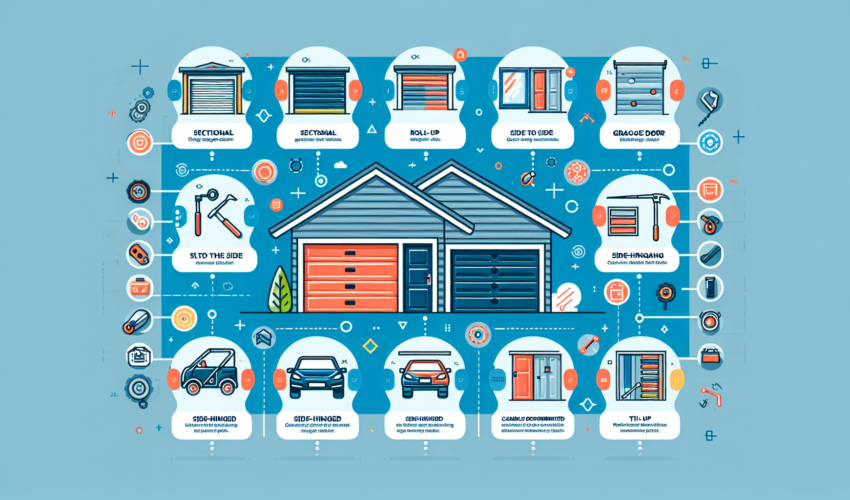Understanding Garage Door Basics: Types and Maintenance Tips
Garage doors are an essential component of many homes, providing security, convenience, and aesthetic appeal. Whether you’re installing a new door or maintaining an existing one, understanding the basics can help you make informed decisions. This article explores the various types of garage doors and offers maintenance tips to keep them functioning smoothly.
Types of Garage Doors
Garage doors come in several styles, each with its own set of advantages. Choosing the right type depends on factors like space availability, design preference, and budget.
- Sectional Doors: These doors are made up of panel sections connected with hinges. As the door opens and closes, wheels at the edge of each panel roll inside a vertical track on each side of the door opening. Sectional doors are the most common in the U.S. and fit well with a variety of home styles.
- Roll-Up Doors: More common in commercial applications, roll-up doors coil into a single roll. They are built to withstand heavy usage and high-performance units can be without springs or enclosed to prevent rust, corrosion, and freezing.
- Slide to the Side Doors: As the name suggests, these doors operate by bending to one side of the garage and sitting parallel to the wall. They are ideal for garages with little headroom.
- Side-Hinged Doors: These traditional doors swing open and closed from a hinged frame on either side of the opening. They can be an attractive option for more classic or rustic home designs.
- Tilt-Up/Up and Over Canopy Doors: This style involves a single solid piece that tilts up into the garage. Part of the door extends outside the garage, providing a small canopy when open.
- Tilt-Up/Up and Over Retractable Doors: Similar to the canopy design but without the canopy effect. These doors retract fully into the garage providing more space inside the garage.
Maintenance Tips
Maintaining your garage door is crucial for its longevity and safety. Here are some maintenance tips to ensure optimal performance:
- Regular Inspections: Inspect your garage door monthly for wear and tear. Look at the springs, cables, rollers, and pulleys for signs of damage. If something seems amiss, it may be time to call a professional repair service.
- Lubrication: Keeping the moving parts of your garage door lubricated will reduce stress on the door’s opener and prolong its life. Use a spray lubricant on the opener’s chain or screw, as well as on the overhead springs, hinges, rollers, and tracks.
- Balance Test: Disconnect the opener by pulling the release handle (usually a red cord) and manually move the door about halfway up. If it doesn’t stay put, the counterweight system (springs) are improperly balanced. A professional adjustment is recommended.
- Reversing Mechanism Test: Place a piece of wood or a brick on the ground in the path of the door. When the door touches the object, it should reverse direction and go back up. If it doesn’t, the opener needs to be repaired or replaced.
- Weatherstripping: Check the weatherstripping at the bottom of the door. If it’s cracked or brittle, replace it to keep the elements out of your garage.
- Keep Tracks Clean: Make sure the tracks on either side of the door are free from debris and rust. Not doing so can lead to premature wear and tear.
Understanding the basics of garage doors can help homeowners make more informed choices about their selection and care. Regular maintenance ensures the door operates safely and efficiently, ultimately extending its lifespan and improving home security.

